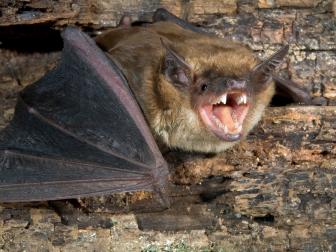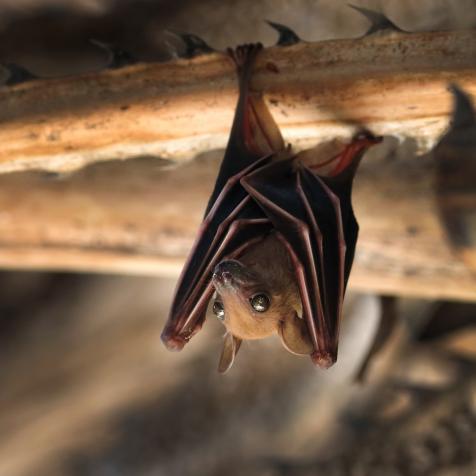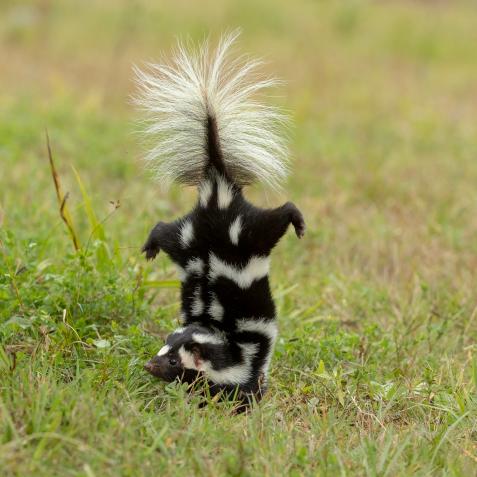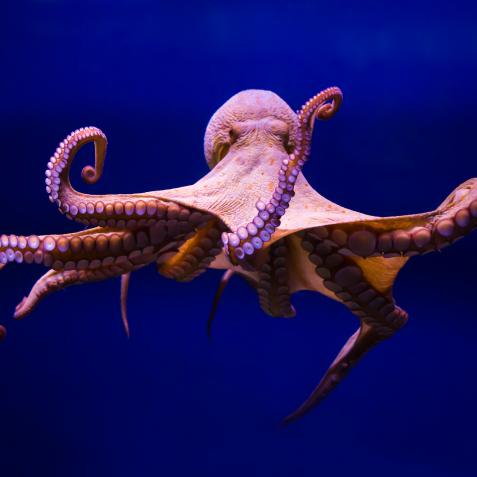
Photo Credit: Nicolas Economou/NurPhoto
What Fat Bears and Astronauts Have in Common
The mysteries around hibernating bears have intrigued curious children and researchers alike for ages. What is hibernation, what causes it and aren’t bears too big to truly hibernate? And probably most interestingly - could humans do this someday?
The most gluttonous reality TV wildlife edition has just come to a dramatic end. The world watched as the bears packed on pounds before they went into their den for the winter. Over the next few months, hidden from all the paparazzi, Fat Bear Week winner, 435 Holly, will slow her breathing down significantly to a fifth of what it is now. Her metabolic rate will be cut in half and her body temperature will come down around 12 degrees Fahrenheit lower than normal. While it may seem like the most hedonistic thing to do in the winter—snuggle up and emerge as the spring flowers do—it certainly sounds tempting. But apart from lazy Yogi Bear, why do bears actually do this?
Read More about Fat Bear Week 2019
Bigger, Badder, Fatter: Fat Bear Week 2019 is Here
It's time for the bears to pack on the salmon and prepare for winter hibernation, but first they must compete in a battle of the fattest: Fat Bear Week.
The mysteries around hibernating bears have intrigued curious children and researchers alike for ages. What is hibernation, what causes it and aren’t bears too big to truly hibernate? And probably most interestingly - could humans do this someday?
Dr Kelly Drew is a neuropharmacologist at the University of Alaska Fairbanks, who studies hibernation. She is also one of the scientists consulting on a project funded by NASA, looking to put humans into hibernation for spaceflight.
“For sending people to space, I think our first step is to perfect short term torpor-like periods in humans,” she says. “If we can figure this out, we can then try for longer periods.” We still have a long way to go before this science fiction dream becomes a reality, but several scientists around the country have been studying hibernation. As understanding slowly develops, one thing that has changed over the years is the definition of the term.
Cory Williams, at the University of Alaska Fairbanks says, “Hibernation is a seasonal state of inactivity and suppressed metabolism during which body temperature drops below levels we would consider typical of non-hibernating, non-torpid mammals.” After years of debate, it is now recognized that ‘hibernation’ is on a spectrum.
“A huge variety of mammals hibernate,” says Williams. “This includes a lot of rodents and bats. Approximately half of all mammalian orders include species that hibernate (including primates and carnivores). There is one species of bird that hibernates as well - the common poorwill. However, hibernation in bears is different from small mammals - their body temperature only drops a few degrees and they don't undergo periodic rewarming.” says Williams. Different bears do it differently too. Those in Alaska go under for around 6 months, while those in Mexico may even emerge in a few days. Some - like the sloth bear - don’t even feel the need to hibernate.
See More Animals that Hibernate
Five Undercover Hibernators 5 Photos
Bears aren't the only ones who pack on the pounds for a long winter's sleep. See what other animals also are all about the hibernation life.
In general, mammals that experience lower body temperatures during hibernation, such as chipmunks and ground squirrels awaken every few days to raise their body temperature, eat a bit, or urinate. Bears do not emerge for any of those activities. Instead, they live off the fat they have collected during the summer and autumn months and even recycle their metabolic waste. The urea produced is broken down to release nitrogen - among other products - which the bear’s body uses to build protein and maintain its muscle mass and organ tissues. For this reason, people around the world have historically killed bears to use a substance secreted from its liver to dissolve gallstones without surgery.
The most popular hibernators are probably Grizzlies and black bears. They breed from May through July, but embryos are only implanted around December, when the female has already been denning for around a month. Cubs are born around February - tiny, naked, and blind. Spring changes everything. By mid-March, male bears start to emerge, followed by solitary females, and then females with older cubs. Around mid-April or early May, new mothers finally bring their cubs out into the world for the first time.
While a lot is now known, Williams says we still do not know exactly what is common between all hibernating animals. “There is not an identified ‘hibernation triggering’ molecule or anything like that in hibernating animals,” he says. “Animals that hibernate tend to be species that occupy environments that periodically lack resources (typically food is hard to access during part of the season), but why some animals can hibernate and others can't is not entirely clear.”
At the moment, the study of hibernation has and continues to contribute significantly to applications in the human world. For example, despite having twice the level of cholesterol as humans, bears do not suffer from hardening of the arteries. They are also able to maintain their bone mass during hibernation, and understanding this could help advance the study of treating people with weak bones. Perhaps one day, it will be the key in sending humans far off into space too.




















